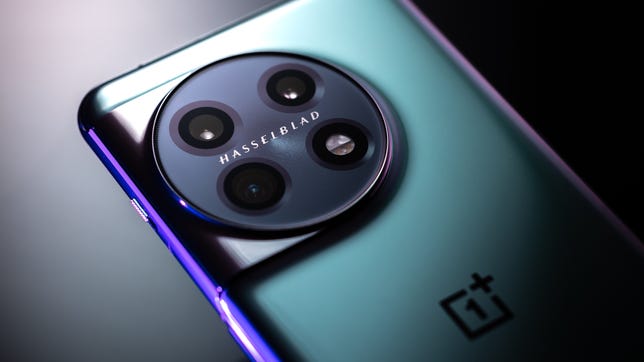Technologies
OnePlus 11 Review: It Works Hard to Earn Its Flagship Title
We reviewed the OnePlus 11 over three weeks. In our tests, the new flagship was powerful, but not perfect.
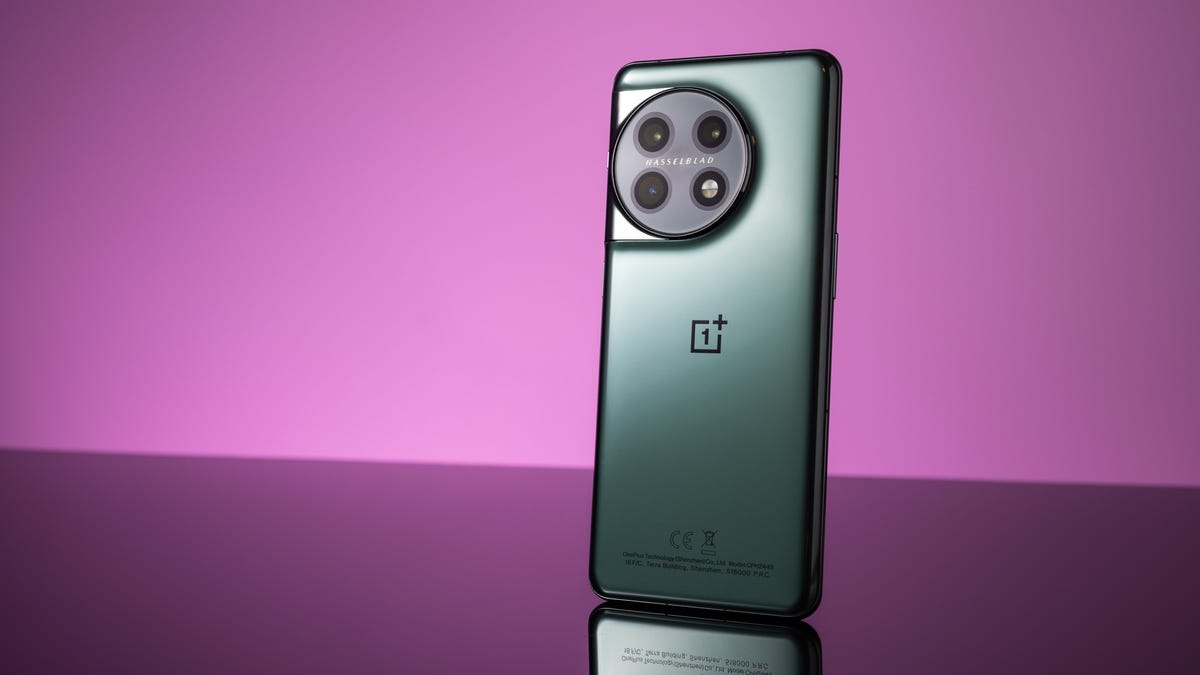
The OnePlus 11 is the company’s first true flagship to launch in 2023 and it offers plenty to get excited about. From its slick refreshed design, to its hyper-powerful processor and fast charging skills, this phone works hard to earn its flagship title.
But it’s not a massive overhaul from last year’s already excellent OnePlus 10 Pro. It’s similar in design, it’s got a hefty (arguably redundant) boost in power and the new camera setup, while good, isn’t a big leap forward. If you were hoping to see a radical new OnePlus phone, you may be disappointed. Owners of recent OnePlus devices shouldn’t consider upgrading.
Like
- Incredible performance for gaming
- Slick, refreshed design
- Hyper-fast charging
- Five years of security support
Don’t Like
- Cameras are good but not great
- Better waterproofing on rivals
Price is certainly on its side. The $699 OnePlus 11 base model ( 729 or roughly AU$1,270) comes with 8GB of RAM and 128GB of storage. Even the higher-end review model I tested, with 16GB of RAM and 256GB of storage, will only set you back $799 ( 799), undercutting its rivals by a decent chunk. The phone’s biggest competition comes from the superb Google Pixel 7 Pro, which at $899 isn’t a big step up in cost (it’s $999 for the equivalent 256GB model, although there’s no boost in power with the extra storage here).
The Pixel 7 Pro was one of our favorite phones of 2022, earning a coveted CNET Editors’ Choice award when it launched in October thanks to its superb cameras, slick interface and attractive design. It’s an amazing phone, and one of my favorite ways to experience Android 13.
Where the OnePlus 11 excels is in its raw power, offering blistering speeds for gaming and heavy multitasking. It charges quicker than Google’s phones, too. The Pixel’s Tensor G2 processor isn’t built for straight-line speed, but still handles anything you’ll find in the Play Store. The Pixel’s pure Android 13 software is clutter-free, and the cameras generally perform better — especially with the addition of the 5x optical zoom lens, which the OnePlus lacks.
Then there’s the new Samsung Galaxy S23, which starts at $800 and comes with a 6.1-inch display, a triple-camera setup, 8GB of RAM and the latest Qualcomm 8 Gen 2 processor. It’s the same chip you’ll find in the OnePlus 11, though it’s been customized for Samsung. With the S23 range going on sale on Feb. 17, we’ll have to wait and see how the new Samsung and OnePlus’ phones stack up against each other.
OnePlus 11: A refreshed design, now with added waterproofing
OnePlus’ flagship has arrived in 2023 with a fresh look, swapping out the square camera unit of the 10 Pro for a circular one, fringed with metal that curves gracefully to meet the edge of the phone. My review model’s green tone looks both stylish and smart, while the curving glass on both the front and back makes it satisfying to hold.
I love the phone’s look. It manages to appear different from its predecessors, while still looking familiar enough to feel part of the same family. The glass is toughened Gorilla Glass, so don’t worry too much about shattering it. The new phone one-ups the 10 Pro by coming with an IP64 rating for protection against water. The lack of waterproofing on most versions of the 10 Pro was annoying as it’s something we’ve come to expect on all flagships. So, it’s good to see more official protection here.
Read more: How Waterproof Is My Phone? IP Ratings Explained
That said, IP64 only offers mild protection against water splashes while rivals — including the Pixel 7 Pro, iPhone 14 range and Galaxy S23 range — all have IP68 ratings which protect them from actual submersion in water for at least 30 minutes. IP64 is better than nothing though and will certainly help keep your phone safe when you take calls in the rain.
At 6.7 inches, the display is sizable enough to do justice to mobile games, while its maximum 3,216×1,440-pixel resolution makes everything look nice and crisp (you can opt for a lower resolution to help eke out the battery life). It’s a SuperAMOLED panel that supports Dolby Vision HDR and HDR 10 Plus, meaning it’s bright, bold and capable of properly showing off compatible HDR content.
Its adaptive frame rate can shoot up to 120Hz to provide a smooth experience for high-intensity tasks like gaming, but can dynamically drop to only 1Hz to save power for less demanding tasks like web browsing or showing the always-on display.
There’s an in-display fingerprint scanner, which works well. Longtime OnePlus fans will be pleased to see the alert slider on the right of the phone, which lets you instantly set the phone to silent or vibrate. The slider was notably absent on last year’s OnePlus 10T.
OnePlus 11: Potent power
Powering the phone is the aforementioned Qualcomm Snapdragon 8 Gen 2 processor, backed up by a meaty 16GB of RAM (on my review model). It’s a potent chip that put in some seriously impressive scores on our suite of benchmark tests, landing it comfortably among the most powerful phones around.
Benchmarks don’t mean everything, of course, but rest assured that this phone will handle anything you care to throw at it. Its graphics performance is particularly strong. Demanding games like Genshin Impact, PUBG Mobile and Asphalt 9: Legends (all at max resolution) displayed at consistently high frame rates for smooth gameplay.
OnePlus touts the phone’s «optimized RAM allocation,» «hardware-accelerated ray tracing» in games and «best in class» lighting and illumination effects, which is all well and good, but there aren’t any games available on Android yet that support things like ray tracing. It’s like having a car capable of driving on MagLev tracks — amazing technology, sure, but no way of actually putting it to use just yet.
In the real world, all that power means the phone is swift to use. Simply navigating around the Android interface is fast, smooth and free of the lag or stutters that might signal poorly configured hardware. There’s little that can slow it down. It handled video streaming and photo editing perfectly well.
That swift experience is helped by the phone’s Oxygen 13 OS software. Based on Android 13, Oxygen OS is a lightweight Android skin with a clean look that’s easy to use. I liked it straight out-of-the-box, but you can customize the system fonts and the always-on display to give it a more personal touch.
OnePlus extended its support period to four years for Android updates and an additional fifth year for security updates. That’s the longest the company has ever supported a phone for and means that the OnePlus 11 will still be safe to use five years from now.
OnePlus 11: Cameras that could do better
There are three main cameras on the back of the OnePlus 11; a 50-megapixel main camera with an f/1.8 lens and optical image stabilization, a 48-megapixel ultra-wide camera with close focusing macro capabilities and a 32-megapixel portrait camera with a 2x optical zoom. It’s a fairly predictable triple-camera setup, but that portrait camera disappoints me.
That 2x zoom is a step down from the 3.3x zoom seen on the OnePlus 10 Pro and a big step down from the 5x telephoto zoom on the Pixel 7 Pro. Zoom skills might not seem like the most important feature, but if you want to take great images in any environment, a powerful zoom can be an invaluable tool.
Instead of using a wide lens and simply capturing everything in front of you in one image, a long zoom lens lets you find more interesting compositions within those scenes by cropping out distracting road signs, cars or crowds of people. A telephoto lens is typically part of any professional photographer’s kit bag (including my own) and I absolutely love using the zoom on the Pixel 7 Pro — and the whopping 10x optical zoom on the Samsung Galaxy S22 Ultra. Even the 3x on the iPhone 14 Pro gives me more room to work with.
Not having a proper telephoto lens on the OnePlus 11 feels like I have to make compromises in my photography that I wouldn’t with other phones. It’s not as fully rounded of a photography package as a result.
OnePlus has again partnered with iconic camera maker Hasselblad, which has apparently calibrated the camera for better colors. However, I’m not sure it’s doing either company much good as the results are hit-and-miss. While some shots look true-to-life, with punchy colors and pleasing contrast, others look oversaturated, with heavy-handed HDR processing that lifts shadows and tones down highlights to an unrealistic degree.
Taken with the main camera, this image above is beautifully exposed, with warm colors and plenty of detail.
This shot above of a ruined cottage deep in the forest is vibrant and pin-sharp. It’s a great snap all-round.
The close-up shot above is absolutely packed with detail and the colors look spot-on. Nice work, OnePlus.
Vibrant blue sky, lovely detail on the building to the left and a lovely flash of color from the rainbow. The phone has captured this scene above well.
This scene doesn’t impress me though. The phone’s software has really gone hard on the HDR processing, lifting the shadows here to such an extent that the shot above looks unrealistic.
Taken on the iPhone 14 Pro, this comparison image above is darker, but the deeper shadows against that bright blue sky are much more realistic and this shot looks much more natural as a result.
The OnePlus 11’s main camera has again lifted the shadows quite a lot in the snap above. The sky has more of a teal tone to it, which doesn’t reflect reality.
The Pixel 7 Pro’s shot above has a deeper contrast and more natural color tones both on the buildings and in the sky.
Switching to the ultrawide camera, the OnePlus 11’s heavy-handed auto HDR resulted in the image above where the sky looks almost fake against the buildings. There’s also a noticeable color shift between the OnePlus 11’s main camera and ultrawide — a detail I’d noticed on the OnePlus 10 Pro, too.
By not reducing the brightness in the sky to the same extent, the Pixel 7 Pro’s shot above looks more authentic.
Using the macro mode on the ultrawide lens, the OnePlus 11 has delivered a great close-up shot above. I love the rich, vibrant green tones.
By comparison, the iPhone 14 Pro’s macro mode has produced the shot above where the green tones are quite washed out and yellow-ish. I don’t like it as much.
The OnePlus 11 Pro lacks the zoom prowess of some of its competitors, but its 2x lens does allow for decent portrait shots. The colors in the image above are a little cold, and there’s not a ton of detail on my face. But the blur effect is nice.
The iPhone 14 Pro’s 3x portrait mode has resulted in a closer-up portrait (it was shot from the same position), and I think there’s better background blur (known as bokeh) here. The details on my face are sharper too, and although the color tones give a warmer look to the image above. It’s a strong yellow effect that I don’t like any more than the cold look of the OnePlus 11’s shot.
There’s no question, though, that I’d miss having a larger zoom. Above is an image from the 2x zoom lens on the OnePlus 11.
The 5x optical zoom of the Pixel 7 Pro lets you get creative zoomed-in shots, like above, that are out of reach for the OnePlus.
As part of the Hasselblad partnership, the phone comes with a variety of color presets created by Hasselblad ‘Master’ photographers. Take a look above. I don’t really like them and would much prefer to simply edit images my own way using any of the very good photo editing apps on the Google Play store.
At night the camera performs very well however. I was impressed at the brightness it was able to achieve, delivering brighter images (see above) than even the iPhone 14 Pro, albeit with less detail.
The iPhone 14 Pro’s night mode shot above has a touch more detail on some of the distant buildings, but it’s not as bright as the shot from the OnePlus.
It’s brighter than night mode shots from the Pixel 7 Pro, too. See above.
It’ll shoot video at up to 8K resolution, but its standard 4K footage will be plenty for most, offering HDR footage that helps keep bright skies under control. Colors look good in videos and while the optical image stabilization helps smooth out shaky hands, it can result in upright objects in your footage (trees, for example) appearing wobbly as the sensor tries to correct the movement. Check out the video below for some clips recorded on the OnePlus 11.
The camera can take some great shots overall. If photography isn’t a huge focus for you, and you just want crisp, vibrant shots of your friends or your kids at the beach then you’ll be well served by the OnePlus 11 — particularly if you like taking photos at night. If you’re looking for a more well-rounded photography experience then look toward the Pixel 7 Pro.
OnePlus 11: Solid battery and fast charging
The phone runs on a 5,000mAh battery that’s capable of getting you through a full day of use, as long as you’re reasonably careful in how you use it. With the display set to its maximum 3,216×1,440-pixel resolution, at 120Hz refresh rate and with screen brightness on max, the battery dropped from full to 92% remaining after 1 hour of streaming a YouTube video. After the second hour it had dropped to only 85% remaining, which isn’t a great performance.
With the resolution dropped to 2,412×1,080 pixels and the refresh rate at a maximum of 60Hz, it didn’t even drop below 100% after an hour of YouTube streaming and only dropped to 95% after a second hour — not bad at all. But 30 minutes of gaming in Genshin Impact with all settings on max comfortably knocked 10% off the battery.
With more conservative settings you won’t need to worry too much about your phone dropping dead halfway through the afternoon, and you should still have plenty of juice remaining when you put it on charge at night. Demanding gamers can ramp up the settings when you want to enjoy every last detail, but make sure you’ve got your charger nearby.
Thankfully, even if you do drain the battery with gaming or YouTube streaming, getting the juice back in is a speedy process. The phone supports 100-watt fast charging in the UK (80W in the US) which will fill the battery from empty in only 25 minutes — or 27 minutes on the 80W model. That’s quicker than the 1 to 2 hours you can expect a full recharge of the Pixel 7 Pro to take.
OnePlus 11: Should you buy it?
If you’re looking for a high-performance phone to tackle gaming, video streaming and all of life’s essentials, the OnePlus 11 is an excellent phone to consider. It’s got power enough to tackle anything in the Google Play store, it looks great and its fast-charging means that battery life isn’t an issue. The five years of security support is a nice bonus, too.
And while the camera setup is far from the best around, it’s perfectly capable of taking shots of your kids on holiday you’ll be excited to share with your wider family and friends.
But it’s the price that stands out here, being one of the cheapest flagships you can buy, undercutting both the Pixel 7 Pro and Samsung Galaxy S23. If photography isn’t your top priority but you do want ultimate performance for gaming on the go, the OnePlus 11 is certainly worth your time.
How we test phones
Every phone tested by CNET’s reviews team is actually used in the real world. We test a phone’s features, play games and take photos. We examine the display to see if it’s bright, sharp and vibrant. We analyze the design and build to see how it is to hold and whether it has an IP-rating for water resistance. We push the processor’s performance to the extremes using both standardized benchmark tools like GeekBench and 3DMark, along with our own anecdotal observations navigating the interface, recording high-resolution videos and playing graphically intense games at high refresh rates.
All the cameras are tested in a variety of conditions from bright sunlight to dark indoor scenes. We try out special features like night mode and portrait mode and compare our findings against similarly priced competing phones. We also check out the battery life by using it daily as well as running a series of battery drain tests.
Technologies
TikTok and FIFA Team Up for World Cup 2026 Coverage
A new team-up aims to make this summer’s tournament more accessible for fans.
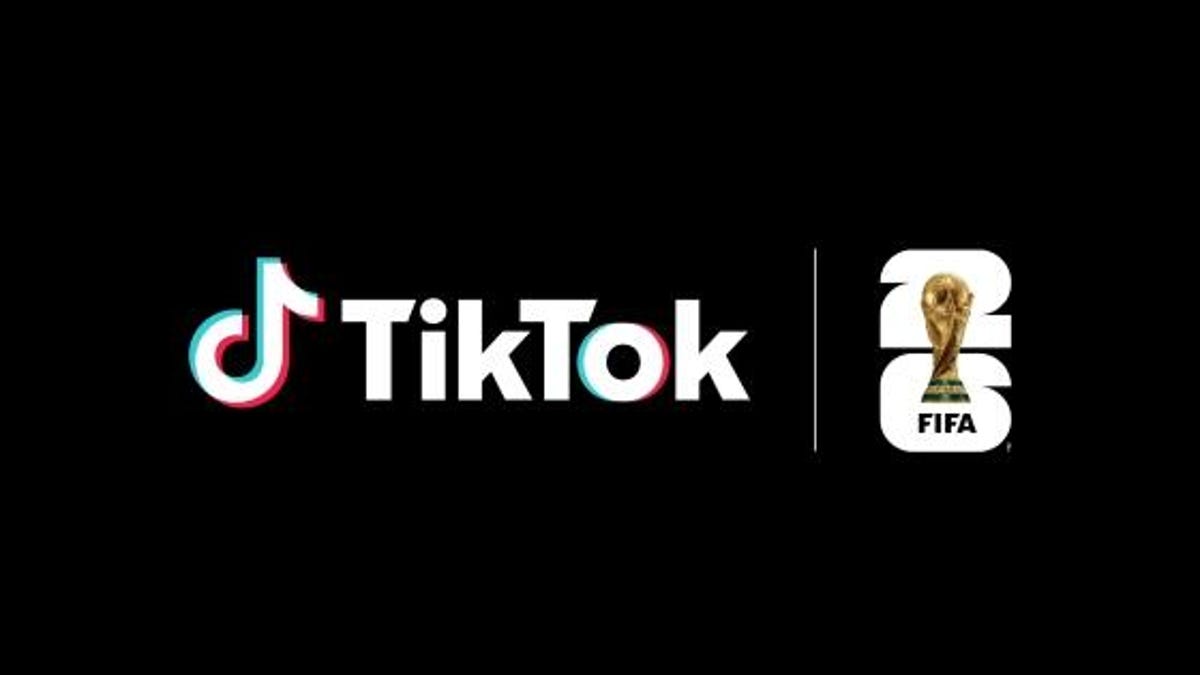
If you hadn’t already planned on swiping on TikTok videos of the 2026 FIFA World Cup, a new partnership between the social media platform and tournament organizer FIFA could motivate you to start stretching out your thumbs.
As the soccer tournament nears — it will take place from June 11 to July 19 and span 16 host cities in Canada, Mexico and the US — TikTok will become FIFA’s first «preferred platform.» According to a FIFA statement on Thursday, this entails TikTok providing more coverage of the World Cup, including original content and even livestreaming of some portions of matches.
Don’t miss any of our unbiased tech content and lab-based reviews. Add CNET as a preferred Google source.
You can use the FIFA World Cup 2026 hub on TikTok to find content, match tickets and viewing information, as well as participation incentives such as custom stickers and filters.
In the US, World Cup games will air live across Fox and FS1. If you don’t have cable, you can get a live TV streaming service, such as YouTube TV, which includes those channels. Additionally, every match will stream live on Fox One and the Fox Sports app.
«FIFA’s goal is to share the exhilaration of the FIFA World Cup 2026 with as many fans as possible,» FIFA Secretary General Mattias Grafström said.
Technologies
Today’s NYT Connections: Sports Edition Hints and Answers for Jan. 9, #473
Here are hints and the answers for the NYT Connections: Sports Edition puzzle for Jan. 9, No. 473.
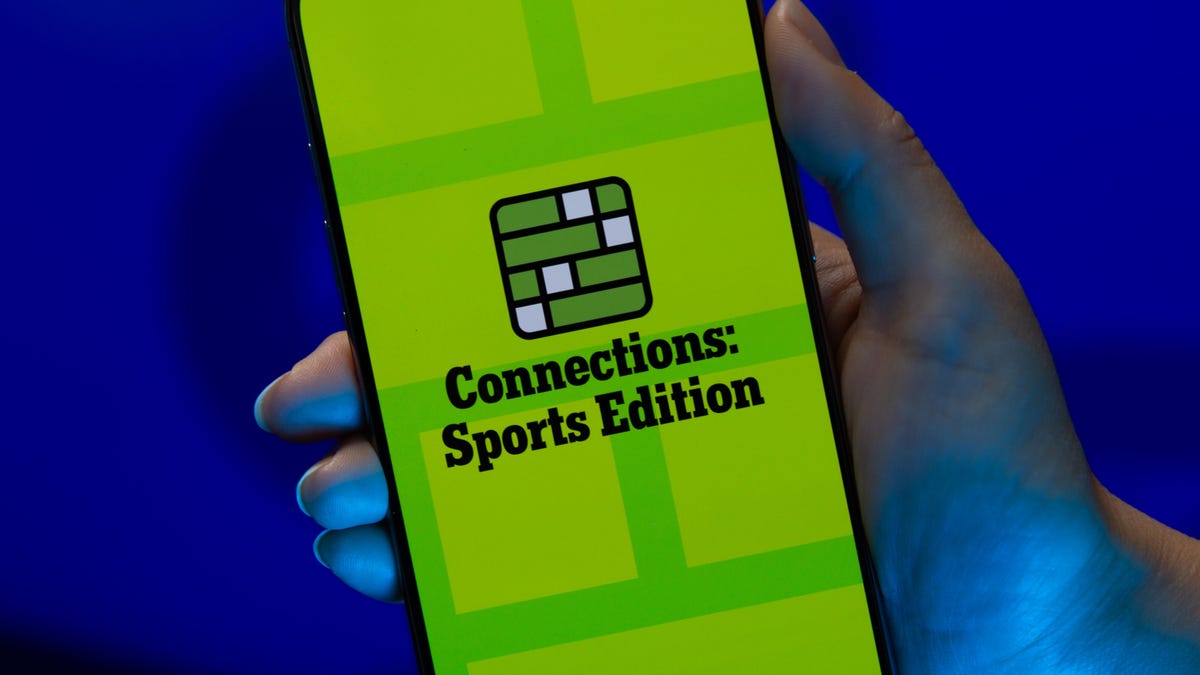
Looking for the most recent regular Connections answers? Click here for today’s Connections hints, as well as our daily answers and hints for The New York Times Mini Crossword, Wordle and Strands puzzles.
Today’s Connections: Sports Edition might be tough, if you don’t know your sports venues. If you’re struggling with today’s puzzle but still want to solve it, read on for hints and the answers.
Connections: Sports Edition is published by The Athletic, the subscription-based sports journalism site owned by The Times. It doesn’t appear in the NYT Games app, but it does in The Athletic’s own app. Or you can play it for free online.
Read more: NYT Connections: Sports Edition Puzzle Comes Out of Beta
Hints for today’s Connections: Sports Edition groups
Here are four hints for the groupings in today’s Connections: Sports Edition puzzle, ranked from the easiest yellow group to the tough (and sometimes bizarre) purple group.
Yellow group hint: Are you ready for some playoffs?
Green group hint: Up! Down!
Blue group hint: Where teams play.
Purple group hint: Not angels.
Answers for today’s Connections: Sports Edition groups
Yellow group: NFL playoff rounds.
Green group: Jumping ability.
Blue group: NBA arenas.
Purple group: ____ devils.
Read more: Wordle Cheat Sheet: Here Are the Most Popular Letters Used in English Words
What are today’s Connections: Sports Edition answers?
The yellow words in today’s Connections
The theme is NFL playoff rounds. The four answers are conference championship, divisional, Super Bowl and wild card.
The green words in today’s Connections
The theme is jumping ability. The four answers are bounce, bunnies, hops and ups.
The blue words in today’s Connections
The theme is NBA arenas. The four answers are Delta, FedEx, Scotiabank and Spectrum.
The purple words in today’s Connections
The theme is ____ devils. The four answers are blue, New Jersey, red and sun.
Don’t miss any of our unbiased tech content and lab-based reviews. Add CNET as a preferred Google source.
Technologies
Speediance’s Compact Resistance Trainer and Wearable Make Wellness and Fitness More Connected
Speediance unveils a portable strength training device and a wearable at CES.
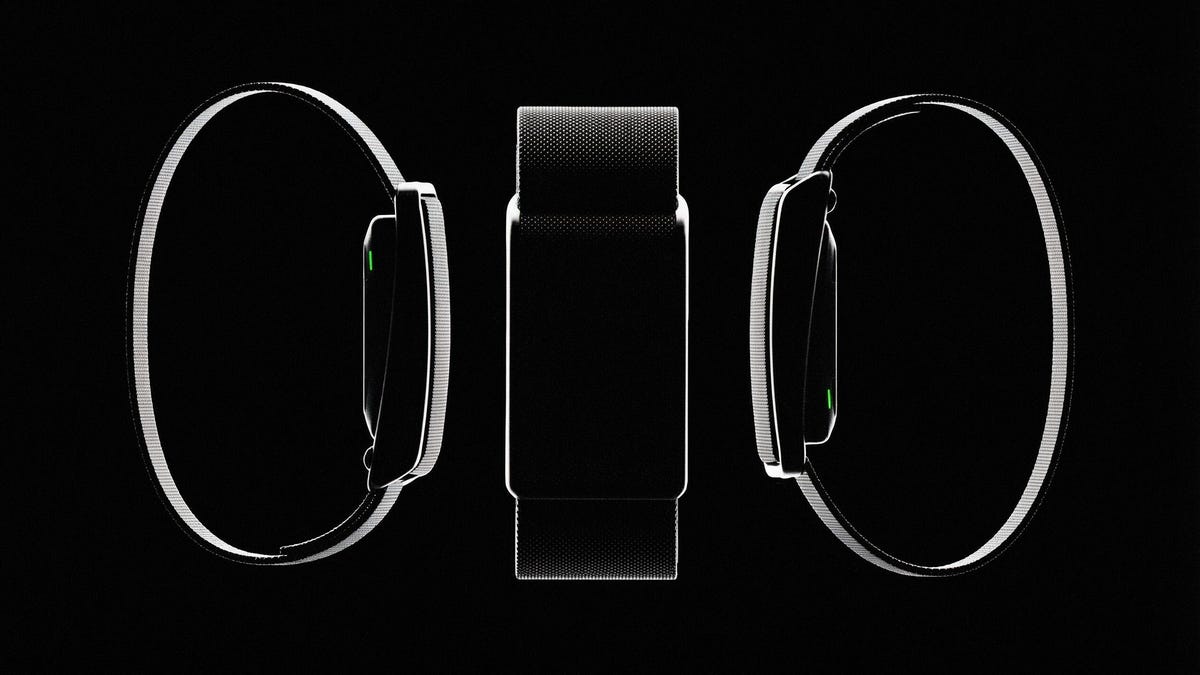
Speediance unveiled its new Gym Nano and Speediance Strap products this week at CES 2026. The smart fitness equipment manufacturer, which previously developed its own smart home gym, the Gym Monster 2, designed the Gym Nano and Speediance Strap to complement its current equipment ecosystem.
«Rather than developing products in isolation, we’re building a comprehensive training and health ecosystem that adapts to users’ real lives and empowers better decision-making over time,» Speediance founder and CEO Liu Tao said in a statement.
Speediance used the consumer tech expo in Las Vegas to demonstrate the Gym Nano, a portable, motor-driven cable resistance training system designed to occupy minimal space for those who prefer to work out at home. The strap is a prototype wearable device designed to read your health data and provide training recommendations based on this insight.
CNET previously tested Speediance’s VeloNix AI Smart Bike and named it the best AI-powered exercise bike.
Don’t miss any of our unbiased tech content and lab-based reviews. Add CNET as a preferred Google source.
Gym Nano
The Gym Nano is a compact digital cable resistance machine trainer that fits any space and delivers full-body workouts. It’s meant to make strength training at home easier if you have limited space and can’t commit to larger home gym equipment.
The Gym Nano offers up to 220 pounds of resistance through adjustable 1-pound increments. It also has five dynamic weight modes: Eccentric, Chain, Standard, Fixed Speed and Sled.
Speediance Strap
The Speediance Strap is a screen-free wearable that collects data related to your sleep, training and core body temperature. It then uploads and shares this data to the Speediance Wellness Plus app, where it makes suggestions for your daily training and recovery based on this information.
The strap can be used for both endurance and strength training activities and recognizes various types of exercises, movement patterns, training volume and other insights that can help you learn how well your body is responding to your training.
The Speediance Strap is a screen-free wearable that collects data related to your sleep, training and core body temperature. It then uploads and shares this data to the Speediance Wellness Plus app, where it makes suggestions for your daily training and recovery based on this information. Similar to other wearables, the Speediance Strap assesses your readiness each day and can detect stress factors to determine if you should focus more on recovery on that day.
«With Speediance Strap, we are exploring how wearable data can function as part of a decision-support layer within a connected fitness system, rather than existing as isolated metrics,» Tao said in a statement.
Additionally, everyday insights (like core and recovery data) will be free to you unless you want to upgrade to the Wellness Plus access, which will come at an additional cost to receive long-term insights and AI planning.
It’s unclear when the Gym Nano will be available for purchase, but the Speediance Strap is expected to launch through a Kickstarter campaign in spring 2026.
-

 Technologies3 года ago
Technologies3 года agoTech Companies Need to Be Held Accountable for Security, Experts Say
-

 Technologies3 года ago
Technologies3 года agoBest Handheld Game Console in 2023
-

 Technologies3 года ago
Technologies3 года agoTighten Up Your VR Game With the Best Head Straps for Quest 2
-

 Technologies4 года ago
Technologies4 года agoBlack Friday 2021: The best deals on TVs, headphones, kitchenware, and more
-

 Technologies4 года ago
Technologies4 года agoGoogle to require vaccinations as Silicon Valley rethinks return-to-office policies
-

 Technologies4 года ago
Technologies4 года agoVerum, Wickr and Threema: next generation secured messengers
-

 Technologies4 года ago
Technologies4 года agoOlivia Harlan Dekker for Verum Messenger
-

 Technologies4 года ago
Technologies4 года agoiPhone 13 event: How to watch Apple’s big announcement tomorrow

